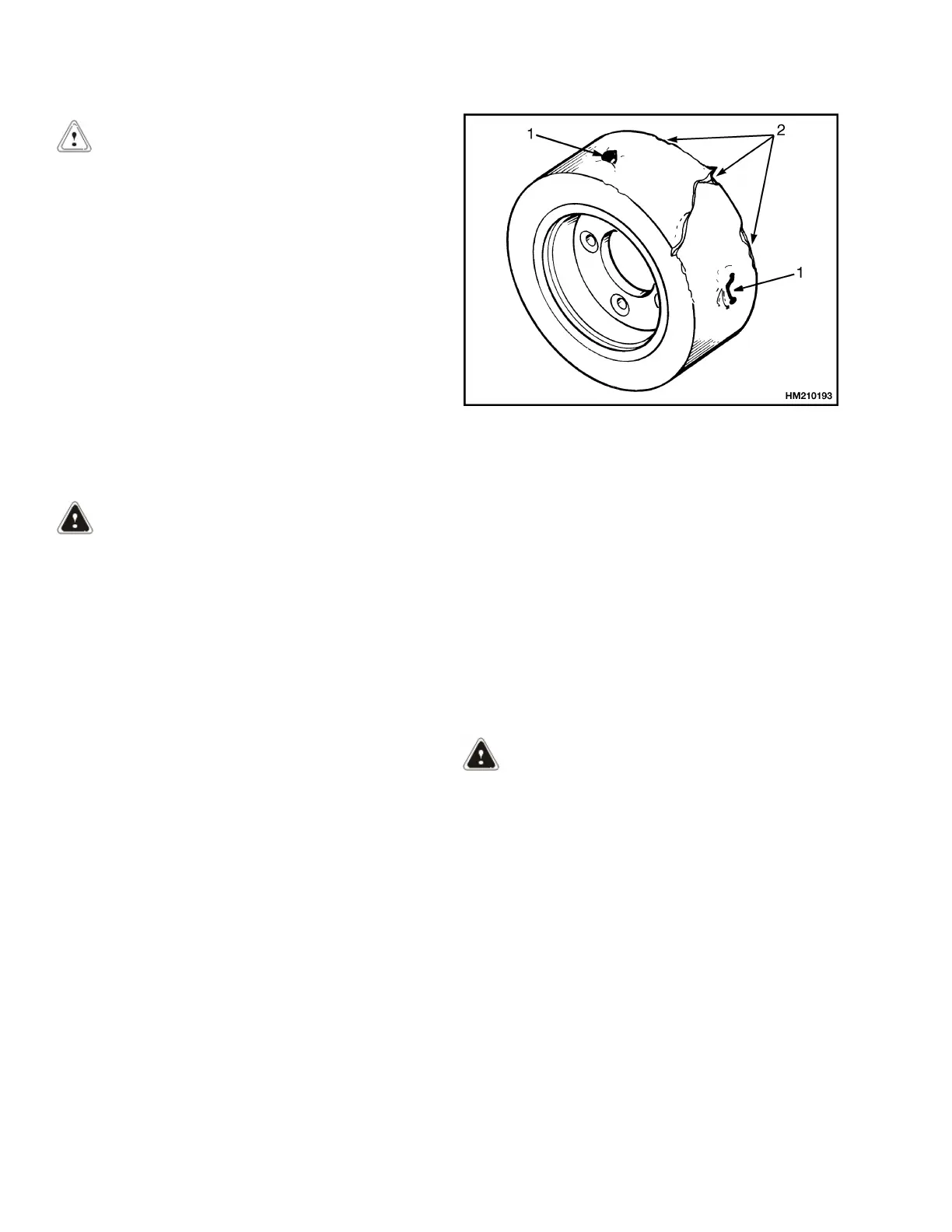CAUTION
Protect the hydraulic system from dirt and
contaminants when servicing the hydraulic
system.
Never operate the pump without the proper
amount of oil in the hydraulic system. The
operation of the hydraulic pump with low oil levels
will damage the pump.
Check for leaks by looking for oil under the lift truck
and where the lift truck has been parked. Visually
inspect the hydraulic system and hoses. Small oil
leaks may appear as wet, oily leaks or unusually dirty
areas where dirt and dust sticks to oil that has slowly
leaked out.
Drive Tire, Load Wheels, Casters, and
Frame
WARNING
When the drive tire has been installed, check all
wheel nuts after 2 to 5 hours of operation. When
the nuts stay tight after an 8-hour check, the
interval for checking the torque can be extended to
350 hours. Refer to the Maintenance Schedule in
this section.
If the drive tire has recently been installed, check to
ensure the lug nuts are properly tightened to
120 N•m (88 lbf ft). When installing, snug all the nuts,
then tighten to half the torque value, then tighten to the
full torque value. Tighten the nuts in a cross pattern to
properly seat the wheel to the hub.
Inspect the tire for embedded rocks, glass, wire,
pieces of metal, holes, cuts, and other damage. See
Figure 6. Remove any object that will cause damage.
Check for loose or missing nuts and broken studs.
Remove any wire strapping or other material that is
wrapped around the axle to prevent damage to the
axle seal.
1. REMOVE EMBEDDED OBJECTS
2. CHECK FOR CUTS, SPLITS, AND OTHER
DAMAGE
Figure 6. Tire Check
Inspect the frame for structural damage and loose/
missing hardware. Make certain all covers are in place
and secured before operating the lift truck. Inspect the
load wheels. Loose or crooked load wheels may
indicate a bearing failure. If failure is suspected, raise
the lift truck slightly and check that the load wheels are
secure on the axles and rotate smoothly. See How to
Put a Lift Truck on Blocks. Repair or replace as
necessary.
Standard Caster Adjustment:
WARNING
In normal operation, the casters should
continuously contact the floor. As the drive tire
wears, the frame will move closer to the floor and
the casters will carry more of the load. If the caster
shims are not periodically adjusted, they will bear
too much of the lift truck weight and reduce the
necessary load on the drive tire. This can interfere
with the ability of the drive tire to control steering
and stopping functions of the truck.
Maintenance Procedures Every 8 Hours or Daily 8000 YRM 1666
10

